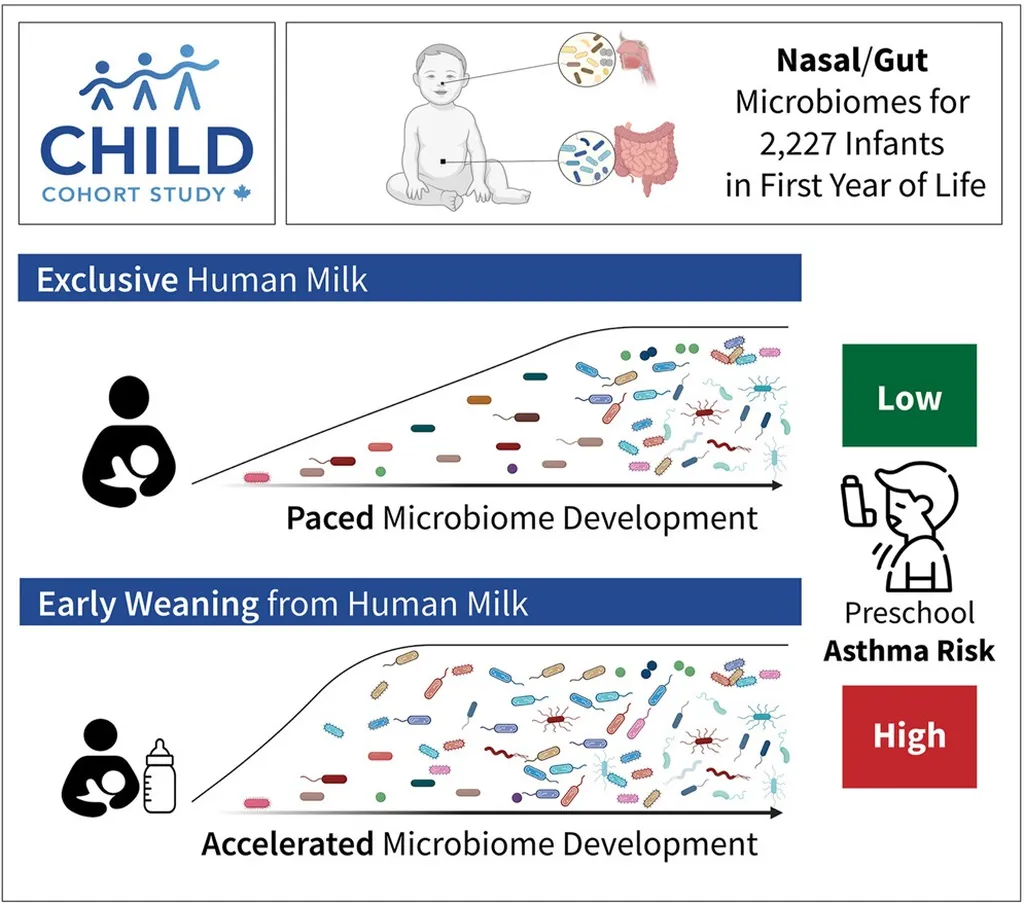In a groundbreaking study published in *Shipin Kexue* (translated to *Food Science*), researchers from the Key Laboratory of Dairy Biotechnology and Engineering at Inner Mongolia Agricultural University have unveiled dynamic changes in the microbial community diversity of breast milk during lactation. Led by YANG Rui and colleagues, this research offers a detailed look into how the microbiota in breast milk evolves over time, providing valuable insights that could shape the future of infant nutrition and health products.
The study, which collected 70 breast milk samples from 12 full-term lactating women over a 24-week period, utilized metagenomic sequencing to analyze the composition and dynamic changes of the breast milk microbiota. The findings revealed that microbial diversity significantly increased during the 20th and 24th weeks, while remaining relatively stable from the 2nd to the 18th week. “This stability followed by a surge in diversity suggests a carefully orchestrated process that could be crucial for infant development,” noted YANG Rui, the lead author of the study.
At the genus level, the researchers observed a notable shift in the relative abundances of key microbial players. Staphylococcus and Streptococcus, which were initially prevalent, gradually decreased in abundance, while Acinetobacter saw a significant increase. This shift in dominance from Staphylococcus epidermidis and Streptococcus salivarius to Acinetobacter ursingii highlights the complex interplay of microbial communities in breast milk.
The study also identified 18 differential metabolic pathways active during different lactation stages. In the early stages, the microbiota primarily focused on the catabolism of various breast milk components. However, as lactation progressed, the microbial function shifted towards amino acid synthesis. “Understanding these metabolic pathways can help us develop more targeted and effective infant nutrition products,” explained YANG Rui.
Another critical finding was the increase in the diversity of antibiotic resistance genes as the lactation period progressed, although their relative abundance remained stable. This observation underscores the importance of monitoring and understanding the evolution of antibiotic resistance in maternal-infant microecology.
The presence of bacteriophages, viruses that infect bacteria, was also a significant factor. The study found a positive correlation between bacteriophages and the relative abundances of 10 genera, including Acinetobacter and Agrobacterium. This interaction could play a pivotal role in shaping the microbial community structure in breast milk.
The implications of this research are far-reaching. By providing a comprehensive analysis of the breast milk microbiota’s dynamic changes, this study offers a robust foundation for future research in maternal-infant microecology. It also paves the way for the development of infant products tailored to different stages of growth, potentially revolutionizing the infant nutrition industry.
As YANG Rui and her team continue to explore these findings, the scientific community and industry stakeholders alike are poised to benefit from a deeper understanding of the intricate microbial ecosystems that support infant health. This research, published in *Shipin Kexue*, not only advances our knowledge of breast milk microbiota but also opens new avenues for innovation in the field of infant nutrition.

